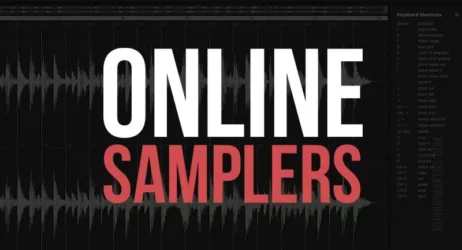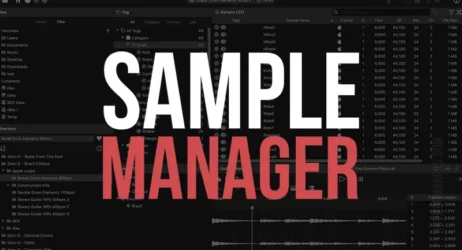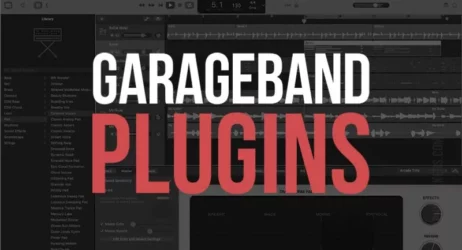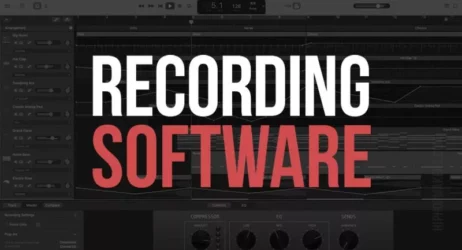This guide will answer what a key in music is, provide examples of keys in music, and help you identify music keys.
- What Is A Key In Music
- Examples of a Key in Music
- Does Changing Mode Change the Key
- How Do I Learn Music Keys
- How Do You Identify a Key
- What Are the 7 Keys in Music
- Is Key & Scale the Same
- How Do You Find the Key in Music
What Is A Key In Music?
A key is the main set of pitches, or notes, that make up a piece of music’s harmonic foundation. The major pitches of a song are generally all from the same scale, which is where the song’s key gets its name. For example, if a song exclusively employs notes from the C Major scale, it is most likely “in the key of C Major”.
The tonic triad, which is formed on the tonic note, is the central chord. A key’s tonic can be any of the 12 tones on the chromatic scale. As a result, there are 12 major keys and 12 minor keys, all of which are employed in music.
The key signature, a set of sharp or flat marks at the beginning of each staff in musical notation, indicates the key.
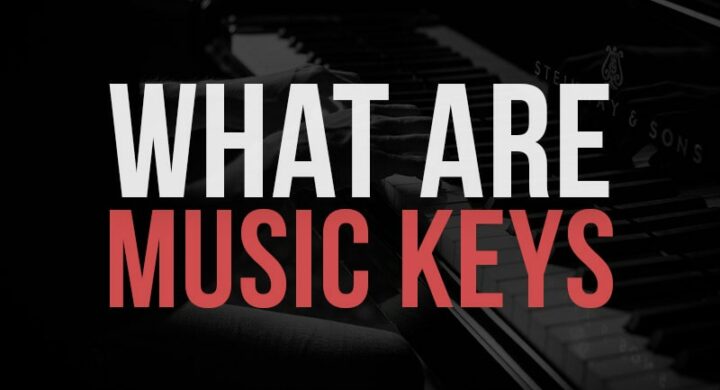
The key idea is crucial to the tonal system (the structuring of notes, chords, and keys around a centrally significant tone), which served as the foundation for most Western art music from approximately 1700 through the twentieth century beyond.
A brief piece of music, such as a song or dance, may only exhibit one key and is considered to be in that key; lengthier compositions, on the other hand, frequently change key but are ordered and united within a primary key predominates at crucial moments.
A key designation can be used to identify a piece, particularly an instrumental work. For example, Beethoven’s Symphony No. 2 in D Major (1802) has three movements that begin and conclude with explicit harmony in D major.
Different keys are linked closely or distantly based on the number of notes in their diatonic scales; for example, C major and G major share six of their seven notes (only F and F vary) and are closely related.
The distantly related keys of C major and C-sharp major, on the other hand, have no note names in common. The tonal system is built around key relationships. The listener’s capacity to detect multiple keys and the act of moving between them (known as modulation) adds immensely to their importance in musical structure.
The circle of fifths is a beneficial tool for visualizing keys, key signatures, and key connections. The keynotes climb by perfect fifths (as in the tonic–dominant relationship) starting at C, the top position, and working clockwise.
Each advance adds a sharp to the key or subtracts a flat, as the case may be. The circle moves enharmonically from F-sharp major, the key with six sharps, to G-flat major, the key with six flats (they sound and look the same on a keyboard instrument). Each minor note is also written on the circle in the same place as its major counterpart.
What Are Examples of a Key in Music?
A key is a major or minor scale that a piece of music revolves around. A major scale is used to compose a song in a major key, and a minor scale is used to compose a song in a minor key.
The seven notes of the C major scale are C, D, E, F, G, A, and B in a song sung in the ‘key of C major.’ That is to say, the basic notes that make up the melody, chords, and bassline of the song are all generated from that set of sounds.
The notes of the F major scale – F, G, A, Bb, C, D, and E – are used in a song written in the ‘key of F major.’
A piece of music in a minor key might also revolve around a natural minor scale. The notes of the D minor scale – D, E, F, G, A, Bb, and C – are used in a song written in the ‘key of D minor.’ A key for a piece of music can be any major scale or natural minor scale.
Does Changing Mode Change the Key?
So, what are modes? Alternative tonalities, often known as scales, are modes. By simply starting on a different scale tone, they may be derived from the well-known major scale.
Modes are called after the ancient Greek modes, even though they bear no resemblance. Modes have a lot of power. Even the most accomplished songwriters and musicians, however, ignore them.
The majority of individuals have no idea what a mode is. They are terrified by it all since it appears to be a complicated system of codes that only the elite of music theory can decode.
The major scale has seven modes for each key signature: Ionian, Dorian, Phrygian, Lydian, Mixolydian, Aeolian, and Locrian. The same notes are used in all modes in that key signature, although they start on different ones
How Do I Learn Music Keys?
The simplest approach to take your ‘untrained’ works to the next level is to gain a rudimentary understanding of music theory. Here are a few pointers on how to learn music keys:
1. Select Music You Enjoy
Choose music that you already enjoy when you decide to learn music keys. If you pick something you enjoy the sound of and are interested in, it will be simpler to remain motivated to practice, and it will be more enjoyable!
2. Set Objectives
Set realistic objectives for yourself regarding what you want to learn and how much time to practice. Setting goals keeps you motivated and allows you to measure your progress more readily.
3. Consistent Practice
The greatest approach to achieving your objectives is to practice regularly. Make a practice regimen to help you stay on track with your studies. Practice sessions should be scheduled regularly and timed to reduce distractions. Practice sessions do not need to be excessively long; 30 minutes is more than plenty.
4. Listen to a Lot of Music
Use a metronome whenever you practice. A metronome will help you keep time, ensuring that you don’t slow down as the music becomes more challenging and speed up when the song becomes more lyrical.
How Do You Identify a Key?
The quickest way to determine a song’s key is to look at its key signature. A song’s key signature is determined by the number of sharps and flats it contains.
What if you don’t have a key signature to determine a song’s key? You must approach it uniquely. It takes a bit more effort, but following the steps below can help make it more systematic.
Related: 8 Best Free Online Song Key Finder Websites
On which chord the song ends?
In many cases, the song’s key will be determined by the chord it closes on. Most often, the conclusion of the song will end on the chord I.
However, this isn’t always the case. If the chords don’t fit the key, you may need to chart them to validate the key.
Map the chords to a given key:
You can determine the key of a song by laying out the chords and seeing where they fit. Unless you know your keys by heart, you’ll probably want to consult a key chart.
Make use of your ears:
It’s worth noting that these chords are also present in G’s relative minor (Em). If the preceding chord sequence had the Em chord, you’d have to figure out what key it was by listening to the music and figuring out where the tonal center was.
You’d consider the music to be in the key of Em if it has a melancholy tone to it. On the other hand, G would be the key if it had a happier vibe to it.
By searching for trends, you may speed up the process. By detecting trends in the chords, you may sometimes speed up the chord mapping process.
What Are the 7 Keys in Music?
A key is a major or minor scale that a piece of music revolves around. A major scale is used to compose a song in a major key, and a minor scale is used to compose a song in a minor key.
The seven notes of the C major scale are C, D, E, F, G, A, and B in a song sung in the ‘key of C major.’ That is to say, the basic notes that make up the melody, chords, and bassline of the song are all generated from that set of sounds.
The notes of the F major scale – F, G, A, Bb, C, D, and E – are used in a song written in the ‘key of F major.’
A piece of music in a minor key might also revolve around a natural minor scale. The notes of the D minor scale – D, E, F, G, A, Bb, and C – are used in a song written in the ‘key of D minor.’ A key for a piece of music can be any major scale or natural minor scale.
Is Key & Scale the Same?
Both scales and keys relate to groupings of tones, and we may use either term to refer to the same thing. There is, nevertheless, a distinction.
A key is a set of tones, and it’s usual to refer to a piece of music as being written in the key of a song using the chords. Because all of the tones in the four chords are in the key of G, this is the case.
The G Major Scale does contain the same tones: G, A, B, C, D, E, and F#. A song in the key of G, on the other hand, might incorporate many scales at the same time. A guitarist playing a blues tune in the key of A, for example, may employ both the pentatonic minor and major scales.
Another distinction between keys and scales is that we usually mean major or minor when talking about a key. However, there is numerous variation in scales.
Music scales can be thought of as instruments for composing music, including improvisation. Music keys, on the other hand, are more of a descriptive term for music.
How Do You Find the Key in Music?
Finding a song’s key is essential for better understanding the music you perform. The key of a song may reveal a lot about how it was composed and the chords and notes you’ll most likely play in it.
Method 1: The first and most straightforward method for determining a song’s key is to examine the sheet music for any key signatures.
A key signature is a technique of indicating the key of a song (or part of the song). Key signatures aren’t used in all sheet music, but when they are, they’re the quickest method to figuring out what the key is.
Method 2: The second method for determining a song’s key is to examine the chords employed in the song.
Method 3: Look at the notes performed in a song and determine what scale corresponds to those notes.
For songs that aren’t entirely reliant on chords, this technique works effectively. Often, all you need is a glance at the notes in a song to figure out what key it is.
Method 4: You may find out the key of a song using any methods listed above.
Keys in Music Overview
A key is an arrangement or grouping of notes used as reference points for musicians when they play their instruments. A key is usually defined by its tonic note and scale degrees above it. For example, C major has the tonic at C, and all other notes are grouped into seven different scales called modes. Each mode contains one sharp degree, two flats, and three natural notes.
Understanding keys is like unlocking a new language. Just like each sentence starts with a capital letter, each piece of music written starts in a main key, be it a major or minor key.
These keys represent the tonal center of the piece, similar to how the central note of a chord is its root note.
Just as we use different words in sentences to convey different meanings, different keys in music express different feelings and emotions. Major keys, made up of major chords, often give a happy and uplifting feel, while minor keys, which include minor chords, can sound more melancholy or serious. The same notes can sound different when played in different keys.
A key can also be changed within a piece. These key changes, like changing lanes, while driving, can give the music a different direction and mood.
For example, a song might begin in a certain key, let’s say a flat key with lots of black notes, and then switch to another key, like a major one with seven sharps. This can make a piece more dynamic and interesting.
Each key has a specific pattern of sharps or flats, which are represented by a key signature.
Even if two keys have the same key signature, they will sound different if one is major and the other is minor. For instance, the major chord, which is often the tonic chord in a key, and the minor chord, which usually serves as the leading tone, may contain the same notes, but they create different effects.
In classical music, it’s not uncommon to see longer pieces composed in more than one key.
The music might start in the original key, switch to other keys, and then return to the original key for a satisfying finish.
But regardless of whether a written piece remains in a single key or explores multiple keys, the key helps to create the unique character and emotional depth of the music.
So remember, just as a painter uses different colors to create a picture, a composer uses major and minor keys, sharps or flats, and key changes to create a masterpiece of sound.
Each different key, each minor or major chord, each note played – all these elements contribute to the rich tapestry of music. Happy listening and playing!
I hope you found this information on music keys helpful.


